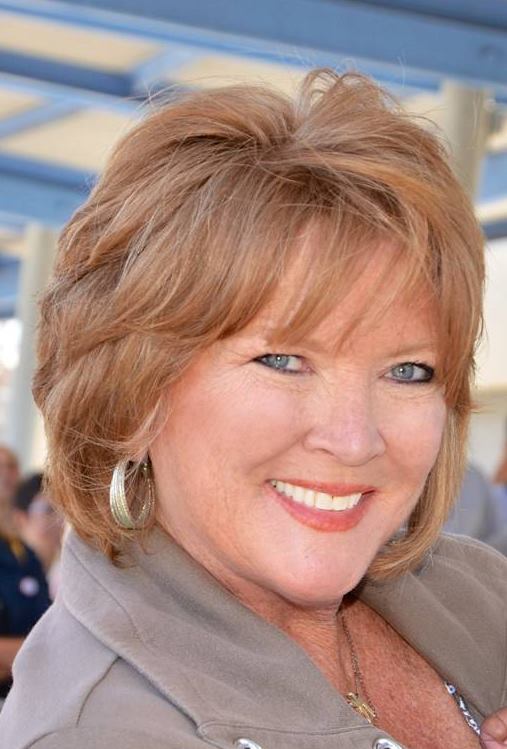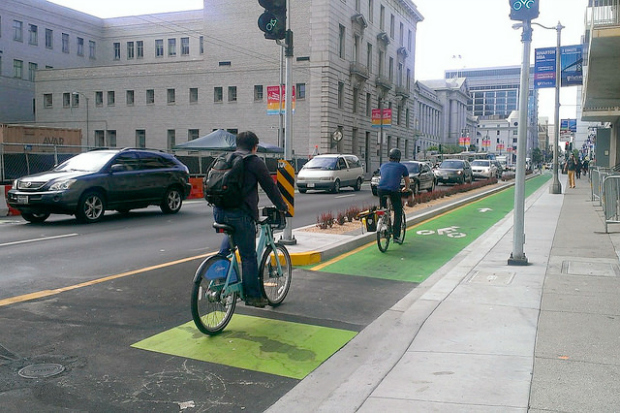You are invited: Modern Times Festival of Dankness

In nine days, the inaugural Modern Times Festival of Dankness will make its appearance on the County Waterfront Park.
First off, if you haven't already, you should get your tickets since all the various city, county, and public safety officials have very sternly warned me that they will be monitoring the event to make sure that everyone present has a ticket to be there. In other words, no gate-crashers will be allowed and this event is going to sell out.
Second, BikeSD is very fortunate to be the charity that will receive the profits from the event. As stated on the event page:
All profits from the Festival of Dankness will benefit BikeSD, an independent member-supported non-profit advocacy organization. BikeSD is dedicated to making San Diego a world-class bicycling city while creating a more livable urban community by promoting everyday riding and advocating for bicycling infrastructure. By 2020, BikeSD's goal is to make San Diego one of the top 15 best cities for bicycling in the world.
An ambitious goal, but very attainable since the variables required to make that vision a reality are finite and accessible. But we can't aim high with limited financial capacity and this festival is giving us a boost to make that vision a reality. I also can't imagine a better way to celebrate the good life that is San Diego than by partaking in some of the most kickass offerings by the best breweries in the region and beyond at the Modern Times Festival of Dankness.
Sometimes when I survey the events happening around me in the city, it can be a little challenging to stay positive. My internal monologue is usually a repetition of, "Dear god! Another parking garage?!? Another freeway widening? People claiming to be pro-bike and yet opposing bike infrastructure? When will this madness end???". But looking back to 2012, when we first launched as an organization, and seeing how far things have changed, it's hard not to see the light at the end of the tunnel. Before BikeSD existed, the notion of bike infrastructure on our neighborhood streets seemed almost like a pipe dream.
But, it is not just about the bicycle or even just bicycle infrastructure (even though that is part of our core mission). It's more about how the bicycle serves as a very useful tool in connecting communities and bringing people together in a way that nothing else can. And the bicycle also happens to be the best way to truly experience, in a very visceral way, all the beauty that comes from living in a city. While I hope to see you at the Festival of Dankness, I also hope that you show up to meet other people who care about making San Diego a truly world-class city. Because it's only when we connect as a community that great things happen.
Councilmember Marti Emerald is not ignoring her commitment to safer streets

A little over a week ago, Councilmember Marti Emerald's Chief of Staff, Ricardo Flores, called me to give me an update on the College Avenue bike lane project. Flores stated that Councilmember Emerald would not be opposing bike lanes on College Avenue and her office would not support the widening of College Avenue either. While I had tweeted about it immediately, I didn't have a chance to put the conversation down in writing.
In March, Dorian Hargrove reported that Councilmember Emerald had written to the Mayor opposing the implementation of bike lanes on College Avenue. Part of the opposition came from her desire to adhere to the College Area Community Plan which was in contradiction with the city's Bicycle Master Plan. The College Area Community Plan, adopted in 1989, called for the widening of College Avenue to six lanes and the elimination of curbside parking. This widening was proposed because of the vehicle traffic projections made back in the 1980s. The 2013 adopted Bicycle Master Plan called for the construction of bike lanes on College Avenue with no mention of the widening of College Avenue, which was called for within the Community Plan. This was because current vehicle traffic counts show a significant decrease in vehicle traffic on College Avenue compared with the projections made in the 1980s.


How do the Bicycle Master Plan and the Community Plan fit together? The Bicycle Master Plan is a detailed view and a subset of the Transportation element within the larger Community Plan. The Community Plan is a subset of the larger General Plan. Yes, we have a lot of plans and in an ideal world, each of the plans should be consistent with the larger plan—but as you can see with the College Area, that is not always the case.
As you may recall, the methodology that has been in use by traffic engineers to justify road expansions has been discredited. Further more, widening roadways to accommodate proposed or actual vehicle traffic increases does nothing to support transportation choices or safe bicycling and walking. Instead, these road widenings have the effect of discouraging bicycling and walking. How? Think about whether you enjoy walking or riding alongside fast moving, noisy traffic.
I am extremely thrilled that Councilmember Emerald listened to your call asking her to not oppose bike lanes. She has demonstrated leadership and commitment in her support for safer streets. In fact, last night, she reiterated that support when she encouraged the City Heights Area Planning Committee to support a road diet plus buffered bike lanes on another high speed neighborhood street: Fairmount Avenue.
Thank you Councilmember. Please take a minute to sign this form to thank Councilmember Emerald. I'll deliver your thanks in person.
Get Involved: Join a BikeSD Committee
BikeSD launched as a non-profit organization nearly three years ago in the fall of 2012 with a goal is to push for transformation through bicycling, as it is the most fulfilling and elegant way to experience a city. The organization was founded to explicitly transform San Diego into the world's best city for bicycling. It is an ambitious vision, but one that is well within the realm of possibility due to the finite variables needed to make that change happen: funding reallocation, street design standards, good public policy, and the political will to make the change.
Since our launch in 2012, we have undoubtedly changed the conversation of what access and transportation means in the city of San Diego. But so much more needs to be done - the vast majority of San Diegans still don't have a transportation choice in how they access everything from jobs to public resources. And the San Diegans that have no choice but to transport themselves by bicycle have to navigate their bicycle commute along corridors that induce high speed traffic alongside the most minimal of bike infrastructure. The latter point is what our push for Vision Zero, a policy to end all traffic deaths, aims to address while closing the fundamental gap between how our elected officials make decisions around funding priorities in conjunction with the city's mobility needs.
Thousands of volunteer hours have been already devoted to BikeSD with the explicit goal of transforming San Diego into being a better city to live and ride - and yet so much more is needed before we as an organization can claim success. The change we are collectively working toward includes being a part of a city where people have a choice in transportation besides driving. This change and transformation can only be accomplished through effective advocacy, public policy changes, public funding reallocation and public support and civic engagement.

Today, we are still a very small organization with a small budget, funded by nearly 1,500 individuals. And all of us are committed to the goal of making San Diego a world-class city for bicycling. Earlier this year, BikeSD's board and core advisors participated in a strategic planning process to create BikeSD's first five-year strategic framework. That framework broke the long range vision into a five-year vision that explicitly spelled out what success would look like. And I want you to play an active role not just in the city's positive transformation, but also in helping guide our work in driving that transformation.
My board set up a committee structure in response to our members' desire to be more involved within our organization and help drive BikeSD's success. And I want you to be involved as well so I encourage you to read our five year framework, and join a BikeSD committee. Positive change is possible and attainable, we just can't do it alone.
UPDATE: 8/24/2015 - Thank you to everyone who signed up. You will receive an email on the next steps. If you want to be involved but missed signing up for a committee, I encourage you to sign up for our mailing list.
This movement must grow
This week's Citybeat had a story about the Uptown Bike Corridor project. The story, written by Joshua Emerson Smith, shed light into what we as an organization are up against: significant money even in small amounts vastly outstrips our own financial capacity to fight against the city's car-centric status quo.
Despite an honest effort in getting our supporters participating in the public process while slowly building consensus and trust for over two years - it was all for naught. Will the SANDAG Transportation Committee re-consider the Uptown Bike Corridor project for University Avenue again with the knowledge that Supervisor Ron Roberts' vote was ethically questionable? I'm not sure that they will. We live in a very car-centric city and despite all the data, studies, public outcries, laws in place compelling our city to change to a multi-modal city - it is clear that the status quo under the guise of marginal gains is what will continue to be pushed and implemented.

The San Francisco Bicycle Coalition is as influential as it is today because it represents 1 in 60 San Franciscans. We represent a mere 1 in 1,000. We have a long way to go before we can successfully claim substantial victories and implement safer streets. I hope you will stick with us for the long haul. If we are to attain any level of influence that a "small non-profit" such as the Hillcrest Business Association has with their being able to spend upwards of $20,000 to fight off safer streets and community consensus, we just have to grow as an organization. If you believe we still can be a world-class city for bicycling, please commit to supporting our work today and inviting a friend to join you.
Friday Funny: Supervisor Greg Cox and the Bayshore Bikeway
If we needed some proof that bikes were entering the mainstream conversation, last night's San Diego Taxpayer Association's Golden Watchdog & Fleece Awards Dinner featured a fired up Supervisor Greg Cox taking full ownership of (and pride in) the implementation of the Bayshore Bikeway.
That was great, Supervisor. Now if you could kindly put in a good word for protected bike lanes on University Avenue, me and everyone here at BikeSD would love you forever.
